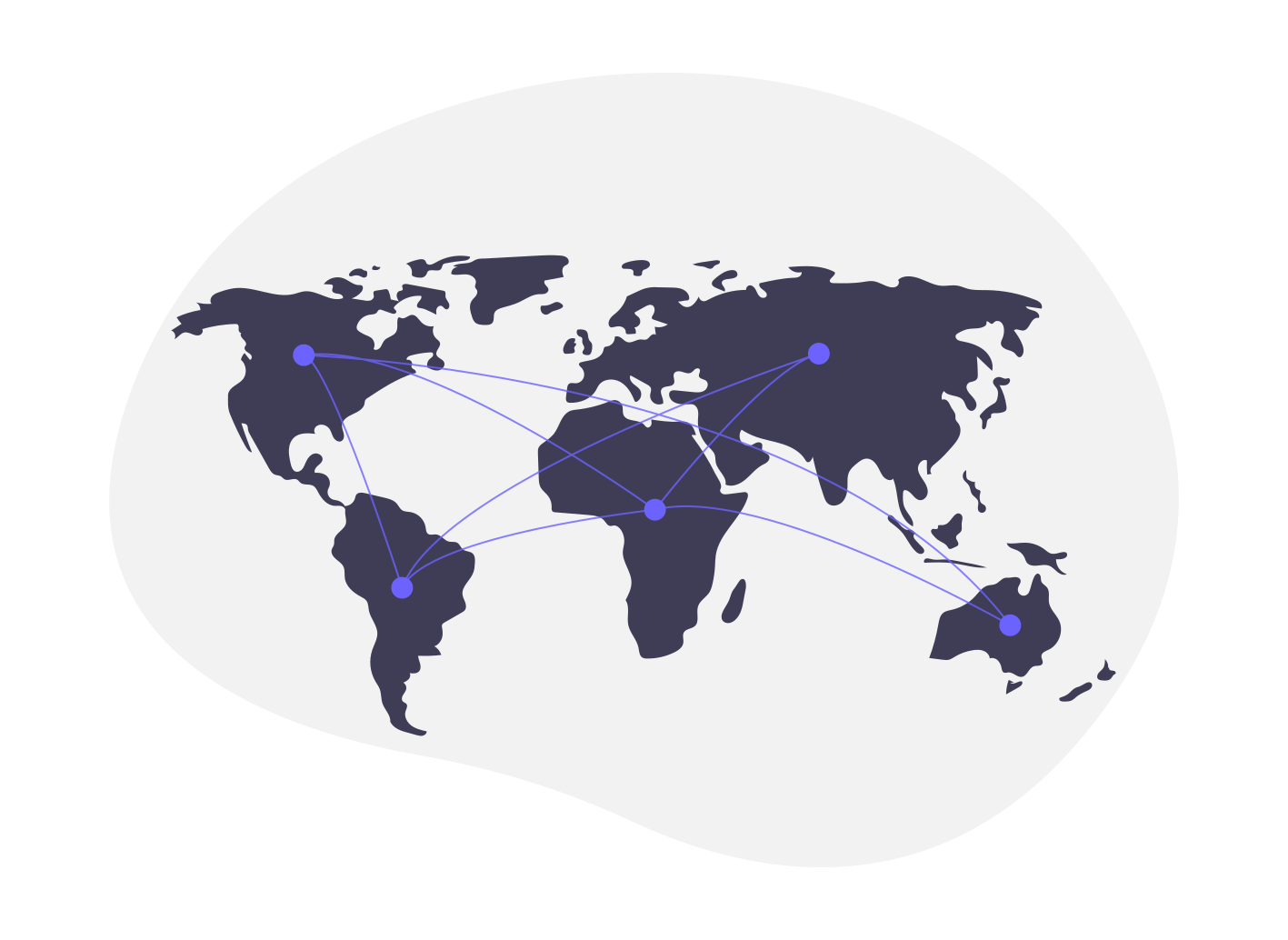Get news, updates, and insights delivered straight to your inbox.
What is Local Marketing Automation?

Local marketing automation is a type of technology that enables businesses to customize their marketing to specific audiences in different locations through various channels effectively using software and digital platforms specifically designed for that purpose.
Local marketing automation allows businesses to localize their brand strategies and refine messaging for those specific audiences. This approach enables brands to focus their messaging on specific micro-segments, emphasizing the uniqueness of particular cities, for example.
Local marketing gives businesses a way to speak to diverse local audiences while creating a single, cohesive brand. Creating advertising campaigns with localized messaging has become critical for the success of brand strategies. For example, a marketing campaign that was originally created for a market in rural Ohio would not translate well to an audience based in the metropolis of NYC.
Local Marketing vs. Local Marketing Automation
Traditionally, local marketing has targeted brand messaging to neighborhoods and other localized areas. Physical marketing strategies were generally built to increase exposure within a target radius.
This approach would mean that consumers living in or close to those areas would be exposed to advertising. However, it would be difficult for advertisers to track consumer interest beyond how much a specific product is sold in a particular area.
With local marketing automation platforms, marketing managers can create targeted messaging, improving relatability for regional consumers. Automated workflows give users access to better data for defining core messaging and relaying it to potential clients at little cost.
By making templates and pre-made assets available to marketing professionals, local marketing automation software and tools contribute to the overall reliability of brand management.
Common Uses of Local Marketing Automation
Local marketing automation provides businesses with a framework for best practices when defining goals and strategies for their advertising campaigns. This automation allows marketing managers and sales professionals to streamline processes and expend less effort when pursuing new markets.
Modern local marketing automation supports campaign growth with tools and software that help leaders ensure clarity and consistency in their product advertisements. This assistance provides more practical considerations for outreach and growth assessment.
Find a Wider Audience
Local marketing automation allows brand managers to find new channels for marketing and advertising. This expansion is essential for increasing revenue and finding new growth markets.
Businesses can use social media and other digital platforms as a convenient and straightforward way to find more customers. Tools that are simple to use help users target local populations to generate engagement and build client relationships. Customization at scale means better experiences for a wider audience.
Control Targeted Messaging
Most local marketing automation platforms allow users to deliver centralized messaging by coordinating across different agencies and markets. Businesses can build better consumer relationships by effectively defining and communicating their values and goals.
Large brands operating across multiple markets require consistent voice and look in their marketing. Local marketing automation allows brands to gain insight into the local market so that their larger brand can work for these specialized markets.
Monitor Goals and Outcomes
Local marketing tools track data flows and provide real-time marketing metrics. By analyzing this data, brands have insight into the most effective marketing campaigns.
Modern businesses that lack oversight of how their marketing campaigns are received cannot develop and improve over time. Marketing managers who want to compete in their fields should consider how local marketing automation can help them improve operational efficiency by fine-tuning their marketing strategies.
Social Media
Social media plays a huge role in local marketing automation. First, consumers have shown an increasing preference for receiving their region-specific solutions via a digital platform. Second – and this should come as no surprise – they also prefer to receive this info through their mobile devices.
All these factors combine to make a powerful case for the use of social media in local marketing automation efforts. Not only are audiences craving products and services they can discover through their phones, but they also want to engage with content that speaks directly to them.
Creating a social media plan can be relatively easy. Do spend time planning a strategy, but don’t let finding the perfect plan hold you back from getting your message out there- it can be refined over time. As with many tactics in marketing, consistency is key. Define your posting schedule (something achievable) and stick to it. Lastly, ensure social posts reflect your brand. It can be easy to get caught up with what others are doing on social media, so take note of their strategies but stay true to your roots.
Social media efforts can even be supported by old-school marketing tactics, like direct mail campaigns. Companies who use this strategy have seen boosts from targeted, local marketing initiatives. Read all about it here.
Google Analytics/SEO
It’s no secret that better brand awareness is a key component of customer conversion rates. Most retail businesses that have maintained a successful local marketing automation strategy have found audience engagement has led to better SEO. Better SEO then leads to lower CPC rates. Now when customers search for a solution like yours they’re either familiar with your brand or, at the very least, more likely to find your brand at the top of their search.
What’s even more exciting is the case that’s been made for improving your brand’s SEO in general. The more content shared and linked across various channels, the greater visibility you’ll gain automatically over time.
How Can Local Marketing Automation Help Your Brand?
Local marketing automation tool is an efficient solution to marketing with excellent specificity and intent on a large scale. It has become a true necessity for most prominent businesses. In a study titled “Benefits, Challenges and the Future of Marketing Automation” 70% of marketing survey responders admit that improving the specificity of their campaigns had a significant impact on their marketing automation strategy.
Brand consistency in all aspects of marketing can boost product sales long term. Developing a reliable message is known to build trust with your audience. And with all of the marketing noise out in the world today, your audiences now desire a consistent thought leader.
Marketing leaders have become increasingly aware of the importance of local marketing automation for improving sales and raising brand awareness within targeted regions.
Local marketing tools and software make targeting campaign messages easier, faster, and more transparent. This approach means that marketing strategies can be deployed efficiently and at a lower cost. Reduced overhead means that businesses can scale and grow more effectively without worrying about out-of-control spending.
With local marketing automation platforms, businesses have access to better control mechanisms to build improved marketing capabilities and reach more clients. This access means they can coordinate across different regional branches and build better networking solutions for all stakeholders.
How Do Local Marketing Automation Platforms Work for Your Business Model?
Marketing professionals who want to apply local marketing automation platforms to their business models should consider how potential target customers respond to specific messaging campaigns.
Businesses can reach a wider audience and build brand loyalty by refining messaging strategies with local marketing automation platforms.
If you’re starting a marketing project at your company, it’s essential to first figure out how to promote the brand through local strategic partnerships or direct geo-targeted campaigns.
This determination means defining which goals and consumer targets you want to meet before deploying marketing automation platforms within designated regions.
Key Takeaways
For businesses that want to reach new markets, it’s essential to consider how different strategies and advertisement campaigns resonate with targeted consumers. Local marketing automation ensures brand managers have access to vital tools and platforms for defining consumer-facing strategies and messaging across various regions.
Sales professionals who want insight into how consumers react to their marketing campaigns turn to local marketing automation for practical solutions for deploying and managing localized campaigns.
You might also like


